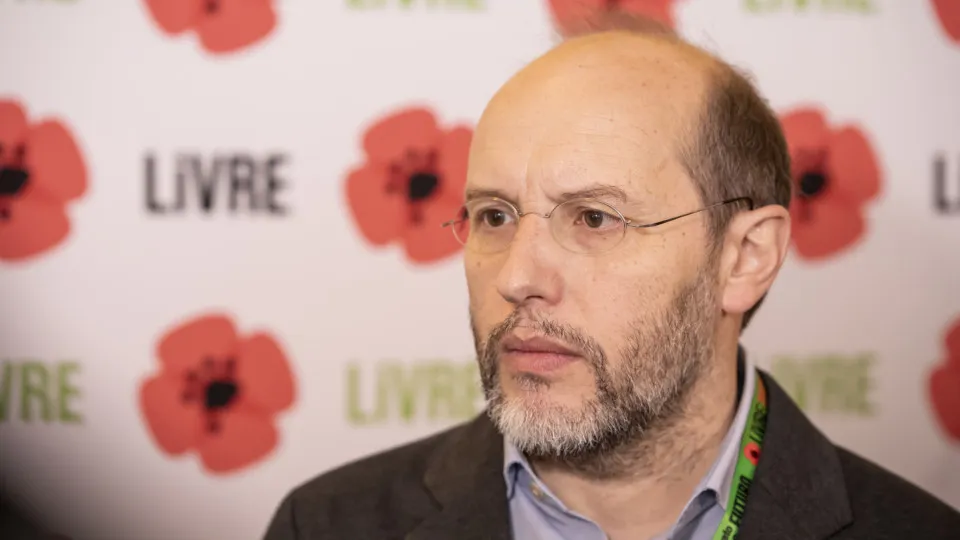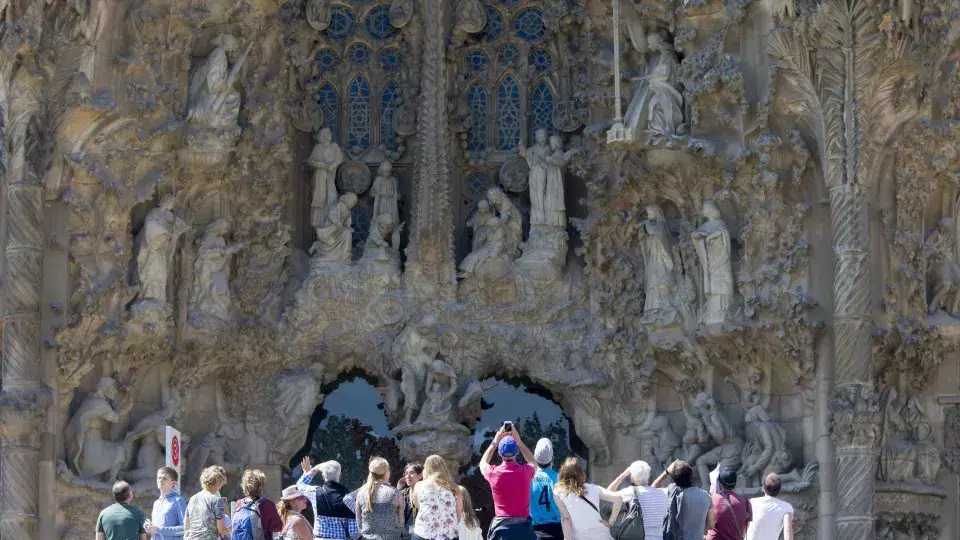With free admission and a presentation scheduled for 7:30 p.m. at Mâmoa, between the grassy banks of the Ul, the small strip of sand along the river, and the calm waters of its bay, the new production by the Aveiro district and Porto Metropolitan Area company is titled “Cassandra,” alluding to the myth of the Greek princess whose accurate prophecies were always disregarded.
The artistic director of BCN assures that the material underlying the new show is “real and very current,” as it is adapted from the master’s thesis of fashion designer and costume designer Jordann Santos. His professional experience in events like Portugal Fashion awakened him to the “frightening” environmental impact of the industry.
“The experience in that field changed him,” says Susana Otero. “At BCN, we have always practiced recycling costumes from previous productions as much as possible, but in this case, what we wear is literally the message – Jordann created a piece for each of the seven dancers on stage, weighing 15 to 20 kilos, made from 30 to 40 used garments,” she emphasizes.
For this, the designer made several selections: creating a costume for Susana consisting only of black pieces, using only white clothes and fabrics for another dancer, designing a long tail made solely of denim for a third cast member, and crafting a floating cloak composed of the metallic sheets typically used to wrap Easter eggs for another.
Part of this raw material was acquired from manufacturing companies with leftovers that failed quality control, some was donated by friends and fans of the company, and some belonged to team friends who have passed away.
Jordann Santos confirms that “Cassandra” was born from his disappointment with the “dark backstage of the textile industry,” which left him “heartbroken” upon realizing that waste is inevitable and growing, product longevity is undesirable, absolute recycling is impossible, and frugal consumerism is a utopia.
“When I started producing my collections in factories and discovered that the ordered pieces had been made by a woman subcontracted in a garage in the depths of Balazar, Póvoa de Varzim, it shook me, not only because of the poor conditions of the facilities but also because of the insignificant values she practiced,” the designer recalls.
The second shock occurred at a printing house: “Having arrived early at the factory, I decided to walk around the premises and came across a blood-red brook with blue-petrol outlines. It was like an open wound in the earth, and that grotesque scene confronted me with the reality – known, ignored, and invisible – of the negative and direct impact ‘I’ would have on the environment.”
The Performing Arts proved to be a “more balanced” career option, with the added advantage of, culturally and pedagogically, allowing him to explore issues such as the relationship between personal frustrations and consumption, between polluting emissions and climate change, between words and actions, between the premonition of the future and passivity.
Jordann Santos argues that, just like Cassandra, “society today has a forecast of what will happen and needs an immediate resolution, but, in reality, does not want to apply it,” whether out of complacency, capitalist reasons, or otherwise.
This is why BCN’s new production traverses different states of mind and degrees of consciousness: from the almost immobilizing weight of costumes burdened with consumerism, there is a transition to purifying liberation and temporary resistance; but the allure of fashion eventually breaks even the well-intentioned, who then succumb to the desire for imitation and engage in exuberant, dated celebrations, until emotional emptiness prevails, restarting the cycle in a loop of dissatisfaction and guilt with no end date.
“We are the seed of our own destruction,” says Jordann Santos, not very optimistic about the transformative power of his own show. But when asked about the future of the costumes from “Cassandra,” he takes responsibility for his own creations: “I’ll make them grow even more. There are always other pieces to add, and I dream of one day dressing an entire street with them.”




